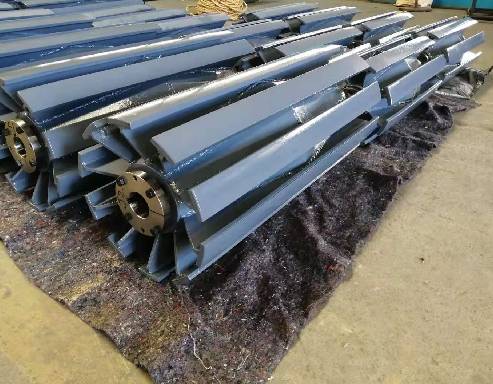 Afrikaans
Afrikaans  Albanian
Albanian  Amharic
Amharic  Arabic
Arabic  Armenian
Armenian  Azerbaijani
Azerbaijani  Basque
Basque  Belarusian
Belarusian  Bengali
Bengali  Bosnian
Bosnian  Bulgarian
Bulgarian  Catalan
Catalan  Cebuano
Cebuano  Corsican
Corsican  Croatian
Croatian  Czech
Czech  Danish
Danish  Dutch
Dutch  English
English  Esperanto
Esperanto  Estonian
Estonian  Finnish
Finnish  French
French  Frisian
Frisian  Galician
Galician  Georgian
Georgian  German
German  Greek
Greek  Gujarati
Gujarati  Haitian Creole
Haitian Creole  hausa
hausa  hawaiian
hawaiian  Hebrew
Hebrew  Hindi
Hindi  Miao
Miao  Hungarian
Hungarian  Icelandic
Icelandic  igbo
igbo  Indonesian
Indonesian  irish
irish  Italian
Italian  Japanese
Japanese  Javanese
Javanese  Kannada
Kannada  kazakh
kazakh  Khmer
Khmer  Rwandese
Rwandese  Korean
Korean  Kurdish
Kurdish  Kyrgyz
Kyrgyz  Lao
Lao  Latin
Latin  Latvian
Latvian  Lithuanian
Lithuanian  Luxembourgish
Luxembourgish  Macedonian
Macedonian  Malgashi
Malgashi  Malay
Malay  Malayalam
Malayalam  Maltese
Maltese  Maori
Maori  Marathi
Marathi  Mongolian
Mongolian  Myanmar
Myanmar  Nepali
Nepali  Norwegian
Norwegian  Norwegian
Norwegian  Occitan
Occitan  Pashto
Pashto  Persian
Persian  Polish
Polish  Portuguese
Portuguese  Punjabi
Punjabi  Romanian
Romanian  Russian
Russian  Samoan
Samoan  Scottish Gaelic
Scottish Gaelic  Serbian
Serbian  Sesotho
Sesotho  Shona
Shona  Sindhi
Sindhi  Sinhala
Sinhala  Slovak
Slovak  Slovenian
Slovenian  Somali
Somali  Spanish
Spanish  Sundanese
Sundanese  Swahili
Swahili  Swedish
Swedish  Tagalog
Tagalog  Tajik
Tajik  Tamil
Tamil  Tatar
Tatar  Telugu
Telugu  Thai
Thai  Turkish
Turkish  Turkmen
Turkmen  Ukrainian
Ukrainian  Urdu
Urdu  Uighur
Uighur  Uzbek
Uzbek  Vietnamese
Vietnamese  Welsh
Welsh  Bantu
Bantu  Yiddish
Yiddish  Yoruba
Yoruba  Zulu
Zulu Exploring the Mechanisms and Applications of Conveyor Belts and Pulleys in Industrial Settings
The Role of Conveyor Belts and Pulleys in Modern Industry
Conveyor belts and pulleys are fundamental components in various industrial applications, facilitating the efficient movement of materials across different manufacturing processes. Their design, integration, and functionality contribute significantly to productivity, safety, and operational efficiency in industries ranging from mining and packaging to food processing and logistics.
Understanding Conveyor Belts
A conveyor belt is a continuous loop that transports materials from one point to another within an industrial setting. Typically constructed from durable materials such as rubber, fabric, or metal, these belts are designed to handle various weights and types of materials. The convenience of conveyor belts lies in their ability to transport bulk items, products, and even fluids seamlessly across horizontal and inclined surfaces. Their integration into production lines reduces labor costs and minimizes human error, leading to enhanced productivity.
The design of conveyor belts can vary drastically depending on their intended use. For example, belts used in the food industry are manufactured to meet strict hygiene standards, often with materials that are easy to clean and resistant to contaminants. Conversely, heavy-duty belts used in mining operations are built to withstand abrasive materials and harsh environmental conditions. The versatility of conveyor belts makes them a critical component in numerous sectors.
The Functionality of Pulleys
Pulleys play an essential role in the operation of conveyor belts. A pulley is a wheel on an axle or shaft designed to support movement and change the direction of a belt or cable. In the context of conveyor systems, pulleys are used to drive the conveyor belt, enable the lifting of materials, and change the belt's direction when necessary.
conveyor belt and pulley

Typically, there are two types of pulleys found in conveyor systems drive pulleys and return pulleys. The drive pulley, located at the end of the conveyor belt, is powered by a motor. It propels the belt forward, allowing it to transport materials efficiently. The return pulley, on the other hand, acts as a support structure, helping to maintain the belt's tension and ensuring it remains aligned during operation.
The Synergy Between Conveyor Belts and Pulleys
The collaboration between conveyor belts and pulleys creates a highly effective material handling system. The efficiency of a conveyor system greatly depends on the correct selection and installation of both components. A poorly designed pulley can lead to increased wear and tear on the belt, reducing its lifespan and resulting in costly downtimes. Therefore, engineers must carefully assess the operational requirements, including load capacity, belt speed, and environmental conditions, when designing these systems.
Moreover, advancements in technology have led to the development of smart conveyor systems equipped with sensors and controls that monitor performance. These innovations enable industries to optimize their operations further by providing real-time data on the movement of goods, equipment health, and potential maintenance needs, ultimately boosting productivity and minimizing disruptions.
Conclusion
In conclusion, conveyor belts and pulleys are indispensable elements of modern industrial processes. Their ability to enhance efficiency, reduce labor costs, and improve safety protocols demonstrates their value across various sectors. As industries continue to evolve and seek innovative solutions to streamline operations, the roles of conveyor belts and pulleys will undoubtedly expand, paving the way for more sophisticated and automated material handling systems. Understanding the intricacies of how these components work together allows businesses to make informed decisions that positively impact their operational effectiveness and overall success.
-
Revolutionizing Conveyor Reliability with Advanced Rubber Lagging PulleysNewsJul.22,2025
-
Powering Precision and Durability with Expert Manufacturers of Conveyor ComponentsNewsJul.22,2025
-
Optimizing Conveyor Systems with Advanced Conveyor AccessoriesNewsJul.22,2025
-
Maximize Conveyor Efficiency with Quality Conveyor Idler PulleysNewsJul.22,2025
-
Future-Proof Your Conveyor System with High-Performance Polyurethane RollerNewsJul.22,2025
-
Driving Efficiency Forward with Quality Idlers and RollersNewsJul.22,2025





























